Navigate between the tabs to learn more about how to use and maintain the Cool Cube™.
- Place panels in a freezer until all PCM turns solid (i.e. 2 hrs. @ -15°C). Shake to verify.
- Transfer panels into a fridge at least 3 hours before use. Panels may be stored in the fridge until needed for assembly or the PCM melts.*
- Before assembly, shake panels to verify PCM is solid. If liquid is heard, restart at step 2a to ensure longest hold time. Using liquid panels, or panels with a solid/liquid combination, decreases hold time.
The time varies between prep methods:
- Method A: ≈ 5 hours
- Method B: ≈ 24 hours
- Method C: ≈ 3 hours
In the user guide we recommend Method A, although all methods work. Choose the method that works best with your schedule.
If you store the PCM panels in your refrigerator they will be available to use whenever you need them. Shake the panels to see if they are solid. If they are slushy your refrigerator is too warm. If the panels are slushy they will still work, but the hold times will be decreased.
Prep Method A:
- Place panels in a freezer until all PCM turns solid (i.e. 2 hrs. @ -15°C). Shake to verify.
- Transfer panels into a fridge at least 3 hours before use. Panels may be stored in the fridge until needed for assembly or the PCM melts.*
- Before assembly, shake panels to verify PCM is solid. If liquid is heard, restart at step 2a to ensure longest hold time. Using liquid panels, or panels with a solid/liquid combination, decreases hold time.
Click here for a detailed guide to all of the prep methods.
- Place panels in a freezer until all PCM turns solid (i.e. 2 hrs. @ -15°C). Shake to verify.
- Transfer panels into a fridge at least 3 hours before use. Panels may be stored in the fridge until needed for assembly or the PCM melts.*
- Before assembly, shake panels to verify PCM is solid. If liquid is heard, restart at step 2a to ensure longest hold time. Using liquid panels, or panels with a solid/liquid combination, decreases hold time.
The time varies between prep methods:
- Method A: ≈ 5 hours
- Method B: ≈ 24 hours
- Method C: ≈ 3 hours
In the user guide we recommend Method A, although all methods work. Choose the method that works best with your schedule.
If you store the PCM panels in your refrigerator they will be available to use whenever you need them. Shake the panels to see if they are solid. If they are slushy your refrigerator is too warm. If the panels are slushy they will still work, but the hold times will be decreased.
Prep Method A:
- Place panels in a freezer until all PCM turns solid (i.e. 2 hrs. @ -15°C). Shake to verify.
- Transfer panels into a fridge at least 3 hours before use. Panels may be stored in the fridge until needed for assembly or the PCM melts.*
- Before assembly, shake panels to verify PCM is solid. If liquid is heard, restart at step 2a to ensure longest hold time. Using liquid panels, or panels with a solid/liquid combination, decreases hold time.
Click here for a detailed guide to all of the prep methods.
- Place panels in a freezer until all PCM turns solid (i.e. 2 hrs. @ -15°C). Shake to verify.
- Transfer panels into a fridge at least 3 hours before use. Panels may be stored in the fridge until needed for assembly or the PCM melts.*
- Before assembly, shake panels to verify PCM is solid. If liquid is heard, restart at step 2a to ensure longest hold time. Using liquid panels, or panels with a solid/liquid combination, decreases hold time.
The time varies between prep methods:
- Method A: ≈ 5 hours
- Method B: ≈ 24 hours
- Method C: ≈ 3 hours
In the user guide we recommend Method A, although all methods work. Choose the method that works best with your schedule.
If you store the PCM panels in your refrigerator they will be available to use whenever you need them. Shake the panels to see if they are solid. If they are slushy your refrigerator is too warm. If the panels are slushy they will still work, but the hold times will be decreased.
Prep Method A:
- Place panels in a freezer until all PCM turns solid (i.e. 2 hrs. @ -15°C). Shake to verify.
- Transfer panels into a fridge at least 3 hours before use. Panels may be stored in the fridge until needed for assembly or the PCM melts.*
- Before assembly, shake panels to verify PCM is solid. If liquid is heard, restart at step 2a to ensure longest hold time. Using liquid panels, or panels with a solid/liquid combination, decreases hold time.
Click here for a detailed guide to all of the prep methods.
- Place panels in a freezer until all PCM turns solid (i.e. 2 hrs. @ -15°C). Shake to verify.
- Transfer panels into a fridge at least 3 hours before use. Panels may be stored in the fridge until needed for assembly, or the PCM melts.*
- Before assembly, shake panels to verify PCM is solid. If liquid is heard, restart at step 2a to ensure longest hold time. Using liquid panels, or panels with a solid/liquid combination, decreases hold time.
The time varies between prep methods:
- Method A: ≈ 5 hours
- Method B: ≈ 24 hours
- Method C: ≈ 3 hours
In the user guide we recommend Method A, although all methods work. Choose the method that works best with your schedule.
If you store the PCM panels in your refrigerator they will be available to use whenever you need them. Shake the panels to see if they are solid. If they are slushy your refrigerator is too warm. If the panels are slushy they will still work, but the hold times will be decreased.
Prep Method A:
- Place panels in a freezer until all PCM turns solid (i.e. 2 hrs. @ -15°C). Shake to verify.
- Transfer panels into a fridge at least 3 hours before use. Panels may be stored in the fridge until needed for assembly or the PCM melts.*
- Before assembly, shake panels to verify PCM is solid. If liquid is heard, restart at step 2a to ensure longest hold time. Using liquid panels, or panels with a solid/liquid combination, decreases hold time.
Click here for a detailed guide to all of the prep methods.
- Place panels in a freezer until all PCM turns solid (i.e. 2 hrs. @ -15°C). Shake to verify.
- Transfer panels into a fridge at least 3 hours before use. Panels may be stored in the fridge until needed for assembly, or the PCM melts.*
- Before assembly, shake panels to verify PCM is solid. If liquid is heard, restart at step 2a to ensure longest hold time. Using liquid panels, or panels with a solid/liquid combination, decreases hold time.
The time varies between prep methods:
- Method A: ≈ 5 hours
- Method B: ≈ 24 hours
- Method C: ≈ 3 hours
In the user guide we recommend Method A, although all methods work. Choose the method that works best with your schedule.
If you store the PCM panels in your refrigerator they will be available to use whenever you need them. Shake the panels to see if they are solid. If they are slushy your refrigerator is too warm. If the panels are slushy they will still work, but the hold times will be decreased.
Prep Method A:
- Place panels in a freezer until all PCM turns solid (i.e. 2 hrs. @ -15°C). Shake to verify.
- Transfer panels into a fridge at least 3 hours before use. Panels may be stored in the fridge until needed for assembly or the PCM melts.*
- Before assembly, shake panels to verify PCM is solid. If liquid is heard, restart at step 2a to ensure longest hold time. Using liquid panels, or panels with a solid/liquid combination, decreases hold time.
Click here for a detailed guide to all of the prep methods.
- Place panels in a freezer until all PCM turns solid (i.e. 2 hrs. @ -15°C). Shake to verify.
- Transfer panels into a fridge at least 3 hours before use. Panels may be stored in the fridge until needed for assembly, or the PCM melts.*
- Before assembly, shake panels to verify PCM is solid. If liquid is heard, restart at step 2a to ensure longest hold time. Using liquid panels, or panels with a solid/liquid combination, decreases hold time.
The time varies between prep methods:
- Method A: ≈ 5 hours
- Method B: ≈ 24 hours
- Method C: ≈ 3 hours
In the user guide we recommend Method A, although all methods work. Choose the method that works best with your schedule.
If you store the PCM panels in your refrigerator they will be available to use whenever you need them. Shake the panels to see if they are solid. If they are slushy your refrigerator is too warm. If the panels are slushy they will still work, but the hold times will be decreased.
Prep Method A:
- Place panels in a freezer until all PCM turns solid (i.e. 2 hrs. @ -15°C). Shake to verify.
- Transfer panels into a fridge at least 3 hours before use. Panels may be stored in the fridge until needed for assembly or the PCM melts.*
- Before assembly, shake panels to verify PCM is solid. If liquid is heard, restart at step 2a to ensure longest hold time. Using liquid panels, or panels with a solid/liquid combination, decreases hold time.
Click here for a detailed guide to all of the prep methods.
- Place panels in a freezer until all PCM turns solid (i.e. 2 hrs. @ -15°C). Shake to verify.
- Transfer panels into a fridge at least 3 hours before use. Panels may be stored in the fridge until needed for assembly, or the PCM melts.*
- Before assembly, shake panels to verify PCM is solid. If liquid is heard, restart at step 2a to ensure longest hold time. Using liquid panels, or panels with a solid/liquid combination, decreases hold time.
The time varies between prep methods:
- Method A: ≈ 5 hours
- Method B: ≈ 24 hours
- Method C: ≈ 3 hours
In the user guide we recommend Method A, although all methods work. Choose the method that works best with your schedule.
If you store the PCM panels in your refrigerator they will be available to use whenever you need them. Shake the panels to see if they are solid. If they are slushy your refrigerator is too warm. If the panels are slushy they will still work, but the hold times will be decreased.
Prep Method A:
- Place panels in a freezer until all PCM turns solid (i.e. 2 hrs. @ -15°C). Shake to verify.
- Transfer panels into a fridge at least 3 hours before use. Panels may be stored in the fridge until needed for assembly or the PCM melts.*
- Before assembly, shake panels to verify PCM is solid. If liquid is heard, restart at step 2a to ensure longest hold time. Using liquid panels, or panels with a solid/liquid combination, decreases hold time.
Click here for a detailed guide to all of the prep methods.
- Place panels in a freezer until all PCM turns solid (i.e. 2 hrs. @ -15°C). Shake to verify.
- Transfer panels into a fridge at least 3 hours before use. Panels may be stored in the fridge until needed for assembly, or the PCM melts.*
- Before assembly, shake panels to verify PCM is solid. If liquid is heard, restart at step 2a to ensure longest hold time. Using liquid panels, or panels with a solid/liquid combination, decreases hold time.
The time varies between prep methods:
- Method A: ≈ 5 hours
- Method B: ≈ 24 hours
- Method C: ≈ 3 hours
In the user guide we recommend Method A, although all methods work. Choose the method that works best with your schedule.
If you store the PCM panels in your refrigerator they will be available to use whenever you need them. Shake the panels to see if they are solid. If they are slushy your refrigerator is too warm. If the panels are slushy they will still work, but the hold times will be decreased.
Prep Method A:
- Place panels in a freezer until all PCM turns solid (i.e. 2 hrs. @ -15°C). Shake to verify.
- Transfer panels into a fridge at least 3 hours before use. Panels may be stored in the fridge until needed for assembly or the PCM melts.*
- Before assembly, shake panels to verify PCM is solid. If liquid is heard, restart at step 2a to ensure longest hold time. Using liquid panels, or panels with a solid/liquid combination, decreases hold time.
Click here for a detailed guide to all of the prep methods.
- Store panels in an ultra-low freezer* so PCM is solid (i.e. 48 hrs. @ -30°C).
- Before assembly, shake panels to verify PCM is solid. If liquid is heard, restart at step 2a to ensure longest hold time. Using liquid panels, or panels with a solid/liquid combination, deceases hold time
Store in coldest area of freezer; space out panels for good airflow; if stacking, insert a spacer (pencil, tongue depressor, etc.) in between each.
Click here for a detailed guide to all of the prep methods.
The time varies between prep methods:
- Method A: ≈ 24 hours
- Method B: ≈ 3 hours
- Method C: ≈ 24 hours
In the user guide we recommend Method A, although all methods work. Choose the method that works best with your schedule and available resources.
If you store the PCM panels in your freezer they will be available to use whenever you need them. Shake the panels to see if they are solid. If they are slushy your freezer is not cold enough. If the panels are slushy they will still work, but the hold times will be decreased.
Prep Method A:
- Store panels in an ultra-low freezer* so PCM is solid (i.e. 48 hrs. @ -30°C).
- Before assembly, shake panels to verify PCM is solid. If liquid is heard, restart at step 2a to ensure longest hold time. Using liquid panels, or panels with a solid/liquid combination, deceases hold time
Store in coldest area of freezer; space out panels for good airflow; if stacking, insert a spacer (pencil, tongue depressor, etc.) in between each.
Click here for a detailed guide to all of the prep methods.
- Store panels in an ultra-low freezer* so PCM is solid (i.e. 48 hrs. @ -30°C).
- Before assembly, shake panels to verify PCM is solid. If liquid is heard, restart at step 2a to ensure longest hold time. Using liquid panels, or panels with a solid/liquid combination, deceases hold time
Store in coldest area of freezer; space out panels for good airflow; if stacking, insert a spacer (pencil, tongue depressor, etc.) in between each.
Click here for a detailed guide to all of the prep methods.
The time varies between prep methods:
- Method A: ≈ 24 hours
- Method B: ≈ 3 hours
- Method C: ≈ 24 hours
In the user guide we recommend Method A, although all methods work. Choose the method that works best with your schedule and available resources.
If you store the PCM panels in your freezer they will be available to use whenever you need them. Shake the panels to see if they are solid. If they are slushy your freezer is not cold enough. If the panels are slushy they will still work, but the hold times will be decreased.
Prep Method A:
- Store panels in an ultra-low freezer* so PCM is solid (i.e. 48 hrs. @ -30°C).
- Before assembly, shake panels to verify PCM is solid. If liquid is heard, restart at step 2a to ensure longest hold time. Using liquid panels, or panels with a solid/liquid combination, deceases hold time
Store in coldest area of freezer; space out panels for good airflow; if stacking, insert a spacer (pencil, tongue depressor, etc.) in between each.
Click here for a detailed guide to all of the prep methods.
- Store panels in an ultra-low freezer* so PCM is solid (i.e. 24 hrs. @ -25°C).
- Before assembly, shake panels to verify PCM is solid. If liquid is heard, restart at step 2a to ensure longest hold time. Using liquid panels, or panels with a solid/liquid combination, deceases hold time
Store in coldest area of freezer; space out panels for good air flw; if stacking, insert a spacer (pencil, tongue depressor, etc.) in between each.
The time varies between prep methods:
- Method A: ≈ 24 hours
- Method B: ≈ 3 hours
- Method C: ≈ 24 hours
In the user guide we recommend Method A, although all methods work. Choose the method that works best with your schedule and available resources.
If you store the PCM panels in your freezer they will be available to use whenever you need them. Shake the panels to see if they are solid. If they are slushy your freezer is not cold enough. If the panels are slushy they will still work, but the hold times will be decreased.
Prep Method A:
- Store panels in an ultra-low freezer* so PCM is solid (i.e. 48 hrs. @ -30°C).
- Before assembly, shake panels to verify PCM is solid. If liquid is heard, restart at step 2a to ensure longest hold time. Using liquid panels, or panels with a solid/liquid combination, deceases hold time
Store in coldest area of freezer; space out panels for good airflow; if stacking, insert a spacer (pencil, tongue depressor, etc.) in between each.
Click here for a detailed guide to all of the prep methods.
- Store panels in an ultra-low freezer* so PCM is solid (i.e. 48 hrs. @ -30°C).
- Before assembly, shake panels to verify PCM is solid. If liquid is heard, restart at step 2a to ensure longest hold time. Using liquid panels, or panels with a solid/liquid combination, decreases hold time
Store in the coldest area of the freezer; space out panels for good air flow; if stacking, insert a spacer (pencil, tongue depressor, etc.) in between each.
The time varies between prep methods:
- Method A: ≈ 24 hours
- Method B: ≈ 3 hours
- Method C: ≈ 24 hours
In the user guide we recommend Method A, although all methods work. Choose the method that works best with your schedule and available resources.
If you store the PCM panels in your freezer they will be available to use whenever you need them. Shake the panels to see if they are solid. If they are slushy your freezer is not cold enough. If the panels are slushy they will still work, but the hold times will be decreased.
Prep Method A:
- Store panels in an ultra-low freezer* so PCM is solid (i.e. 48 hrs. @ -30°C).
- Before assembly, shake panels to verify PCM is solid. If liquid is heard, restart at step 2a to ensure longest hold time. Using liquid panels, or panels with a solid/liquid combination, deceases hold time
Click here for a detailed guide to all of the prep methods.
- Store panels in a lab incubator* between 15-20°C so PCM is solid (i.e. 24 hrs. @ 15°C). Shake to verify.
- Before assembly, shake panels to verify PCM is solid. If liquid is heard, restart at step 2a to ensure longest hold time. Using liquid panels, or panels with a solid/liquid combination, deceases hold time.
Space out panels for good air flow; if stacking, insert a spacer (pencil, tongue depressor, etc.) between each.
The time varies between prep methods:
- Method A: ≈ 3 hours / Keep product cool (in extreme heat)
- Method B: ≈ 4 hours / Keep product cool (in extreme heat)
- Method C: ≈ 3 hours / Keep product warm (in cold conditions)
- Method D: ≈ 3 hours / Keep product warm (in cold conditions)
In the user guide we recommend Method A, although all methods work. Choose the method that works best for your needs, with your schedule and available resources.
Prep Method A:
- Store panels in a lab incubator* between 15-20°C so PCM is solid (i.e. 24 hrs. @ 15°C). Shake to verify.
- Before assembly, shake panels to verify PCM is solid. If liquid is heard, restart at step 2a to ensure longest hold time. Using liquid panels, or panels with a solid/liquid combination, deceases hold time.
Click here for a detailed guide to all of the prep methods.
- Store panels in a lab incubator* between 15-20°C so PCM is solid (i.e. 24 hrs. @ 15°C). Shake to verify.
- Before assembly, shake panels to verify PCM is solid. If liquid is heard, restart at step 2a to ensure longest hold time. Using liquid panels, or panels with a solid/liquid combination, deceases hold time.
Space out panels for good air flow; if stacking, insert a spacer (pencil, tongue depressor, etc.) between each.
The time varies between prep methods:
- Method A: ≈ 3 hours / Keep product cool (in extreme heat)
- Method B: ≈ 4 hours / Keep product cool (in extreme heat)
- Method C: ≈ 3 hours / Keep product warm (in cold conditions)
- Method D: ≈ 3 hours / Keep product warm (in cold conditions)
In the user guide we recommend Method A, although all methods work. Choose the method that works best for your needs, with your schedule and available resources.
Prep Method A:
- Store panels in a lab incubator* between 15-20°C so PCM is solid (i.e. 24 hrs. @ 15°C). Shake to verify.
- Before assembly, shake panels to verify PCM is solid. If liquid is heard, restart at step 2a to ensure longest hold time. Using liquid panels, or panels with a solid/liquid combination, deceases hold time.
Click here for a detailed guide to all of the prep methods.
- Store panels in a lab incubator* between 15-20°C so PCM is solid (i.e. 24 hrs. @ 15°C). Shake to verify.
- Before assembly, shake panels to verify PCM is solid. If liquid is heard, restart at step 2a to ensure longest hold time. Using liquid panels, or panels with a solid/liquid combination, deceases hold time.
Space out panels for good airflow; if stacking, insert a spacer (pencil, tongue depressor, etc.) between each.
The time varies between prep methods:
- Method A: ≈ 3 hours / Keep product cool (in extreme heat)
- Method B: ≈ 4 hours / Keep product cool (in extreme heat)
- Method C: ≈ 3 hours / Keep product warm (in cold conditions)
- Method D: ≈ 3 hours / Keep product warm (in cold conditions)
In the user guide we recommend Method A, although all methods work. Choose the method that works best for your needs, with your schedule and available resources.
Prep Method A:
- Store panels in a lab incubator* between 15-20°C so PCM is solid (i.e. 24 hrs. @ 15°C). Shake to verify.
- Before assembly, shake panels to verify PCM is solid. If liquid is heard, restart at step 2a to ensure longest hold time. Using liquid panels, or panels with a solid/liquid combination, deceases hold time.
Click here for a detailed guide to all of the prep methods.
- Store panels in a lab incubator* between 15-20°C so PCM is solid (i.e. 48 hrs. @ 15°C). Shake to verify.
- Before assembly, shake panels to verify PCM is solid. If liquid is heard, restart at step 2a to ensure the longest hold time. Using liquid panels, or panels with a solid/liquid combination, decreases hold time.
Space out panels for good airflow; if stacking, insert a spacer (pencil, tongue depressor, etc.) between each.
The time varies between prep methods:
- Method A: ≈ 3 hours / Keep product cool (in extreme heat)
- Method B: ≈ 4 hours / Keep product cool (in extreme heat)
- Method C: ≈ 3 hours / Keep product warm (in cold conditions)
- Method D: ≈ 3 hours / Keep product warm (in cold conditions)
In the user guide we recommend Method A, although all methods work. Choose the method that works best for your needs, with your schedule and available resources.
Prep Method A:
- Store panels in a lab incubator* between 15-20°C so PCM is solid (i.e. 24 hrs. @ 15°C). Shake to verify.
- Before assembly, shake panels to verify PCM is solid. If liquid is heard, restart at step 2a to ensure longest hold time. Using liquid panels, or panels with a solid/liquid combination, deceases hold time.
Click here for a detailed guide to all of the prep methods.
Yes, replacement Cool Cube PCM panels are available for purchase. If you need to replace any PCM panels, you can order them individually from our Cool Cube Components page. The panels are available for all temperature ranges, including:
- Refrigerator PCM Panels (Blue Tab): 2°C to 8°C.
- Lab Freezer PCM Panels (Gray Tab): -50°C to -15°C.
- Room Temperature PCM Panels (Tan Tab): 15°C to 25°C
If you’re unsure which panels you need or have any questions, feel free to call us at 608.526.6901, and our team will be happy to assist you in finding the right replacement parts.
If any part of your Cool Cube gets damaged, don’t worry—all components, including PCM panels, Temp-Shield™ Insulation System (vacuum insulation panels), and other accessories, are available for individual purchase on our website. You can browse and order replacement parts directly from our Cool Cube Components page. This allows you to replace just the part you need without having to buy a whole new system.
If you’re not sure which part you need or have any questions, feel free to give us a call at 608.526.6901. Our customer service team is available to assist you and ensure you get the correct replacement part. We’re here to help with any concerns or issues you may have.
A PCM panel in the Cool Cube is a key component that uses Phase Change Material (PCM) to help regulate the temperature inside the unit. These panels are designed to maintain specific temperature ranges crucial for protecting temperature-sensitive items like vaccines, medicines, and biological samples.
Each PCM panel contains a material that melts and solidifies at precise temperatures. As the surrounding temperature increases, the PCM inside the panel absorbs the heat and melts, stabilizing the environment. When the temperature decreases, the PCM solidifies and releases the stored heat, preventing the interior from cooling too rapidly.
In the Cool Cube, there are different types of PCM panels, each indicated by a color-coded tab, designed to maintain different temperature ranges:
- Refrigerator PCM Panels (Blue Tab): 2°C to 8°C.
- Lab Freezer PCM Panels (Gray Tab): -50°C to -15°C.
- Room Temperature PCM Panels (Tan Tab): 15°C to 25°
Each Cool Cube comes with 6 PCM panels that make up the PCM System.
Answer:
The VIP System, or Vacuum Insulated Panel System, is a cutting-edge insulation technology used in Cool Cube products to provide superior thermal protection. VIPs are constructed with a core material surrounded by a vacuum-sealed barrier. This combination offers exceptional insulation, far more efficient than traditional materials like foam or polyurethane. Here’s how it works:
1. Vacuum Insulation:
The vacuum inside the panels minimizes heat transfer by significantly reducing conduction and convection, which are the primary ways heat is transferred. This vacuum environment is key to achieving the high thermal resistance, or R-value, that makes VIPs so effective at keeping heat out and cold in (or vice versa).
2. Efficiency:
VIPs can be up to five times more effective than conventional insulation, meaning they can maintain stable internal temperatures for much longer periods. This is particularly crucial in applications where temperature-sensitive products like vaccines, medicines, or biological samples are being stored or transported.
3. Durability:
VIPs are built to last. The protective outer wrapping around the core helps ensure that the vacuum remains intact, maintaining the panel’s high insulation performance for years. Even after five years, VIPs can retain up to 95% of their original insulating power.
4. Application in Cool Cubes:
In Cool Cubes, the VIP System works in tandem with PCM (Phase Change Material) panels to maintain precise temperature control for long durations, even in extreme conditions. The VIP System is housed within the outer case of the Cool Cube, ensuring that internal temperatures remain stable without relying on electricity or ice.
By utilizing VIP technology, Cool Cubes offer reliable, energy-efficient temperature control for critical applications like medical transport, off-site vaccination efforts, and emergency preparedness.
PCM, or Phase Change Material, is a type of substance that can store and release large amounts of thermal energy as it changes from one state of matter to another, specifically between solid and liquid phases. This ability to absorb and release heat during its phase transitions makes PCM useful for controlling temperatures.
Here’s how it works: When a material melts (changes from a solid to a liquid), it absorbs heat from its surroundings, which cools down the environment around it. When the material freezes (changes from liquid back to solid), it releases the heat it had absorbed, warming up the environment.
What makes PCM special is that it is engineered to melt and freeze at very specific temperatures, depending on its formulation. For example, some PCM might be designed to melt at a relatively low temperature, like 5°C, while others might melt at higher temperatures. This allows PCM to be used for different applications, like keeping things cool or warm without the need for constant external energy, such as refrigeration.
Because PCM changes phases so efficiently, it can absorb or release a lot of heat without changing its own temperature much during the process. This makes it an excellent tool for maintaining stable temperatures over time, which is critical for safely transporting temperature-sensitive products like vaccines, medicines, and biological samples.
Answer:
PCM (Phase Change Material) improves cooling efficiency by leveraging its ability to store and release large amounts of thermal energy during its phase transitions (melting and freezing). Unlike conventional cooling methods, PCM absorbs heat as it changes from solid to liquid, maintaining a stable temperature for longer periods without active refrigeration. When the temperature around the PCM drops, it re-solidifies, releasing the stored energy and continuing to regulate the temperature.
In the Cool Cube product line, PCM helps improve cooling efficiency in the following ways:
- Temperature Stability: PCM maintains a precise, consistent temperature over time, reducing fluctuations that could compromise sensitive materials like vaccines or lab samples.
- Energy Efficiency: By absorbing and releasing thermal energy, PCM minimizes the need for constant refrigeration or energy input, especially during transport, leading to lower energy consumption.
- Extended Cooling Duration: PCM can maintain the desired temperature for a prolonged period, making it ideal for passive cooling solutions during transport or power outages, which improves overall cooling reliability.
- Freeze Protection: PCM prevents the freezing of materials that should remain at above-freezing temperatures, avoiding the risk of damage due to ice or extreme cold.
By using PCM, Cool Cube products ensure that temperature-sensitive materials remain within safe temperature ranges with fewer external cooling interventions, thus increasing the overall efficiency and reliability of the system.
Answer:
PCM (Phase Change Material) offers several advantages over traditional ice for temperature control, making it a superior choice in applications like the VeriCor Cool Cube. Here’s why:
- Precise Temperature Control:
Ice maintains a temperature around 0°C (32°F) as it melts, which can be too cold for many temperature-sensitive materials like vaccines and medicines. This can result in accidental freezing, which can ruin the products. PCM, on the other hand, is specifically formulated to maintain a precise temperature. For example:- Refrigerator PCM holds temperatures between 2°C and 8°C.
- Lab Freezer PCM holds temperatures around -20°C.
- Longer Duration of Stable Temperatures:
PCM can maintain a consistent temperature for a longer period than ice. As ice melts, it quickly loses its cooling effectiveness. In contrast, PCM absorbs and releases heat more gradually during its phase change, keeping temperatures stable for extended periods. This makes PCM ideal for transporting materials over long distances or storing them during power outages. - Energy Efficiency:
PCM reduces the need for active refrigeration or the constant replacement of ice packs. It provides a passive, energy-efficient cooling solution. This not only saves energy but also reduces the hassle of constantly replenishing ice, particularly during transport. - No Risk of Water Damage:
When ice melts, it turns into water, which can damage packaging or create messes in storage units. PCM, however, remains self-contained within sealed containers as it changes phases, so there’s no risk of leaks or water damage. This ensures a cleaner, safer environment for sensitive materials. - Customized Temperature Ranges:
PCM can be tailored to specific temperature ranges based on the needs of the products being stored. Ice cannot be customized to maintain temperatures other than around 0°C, making it less versatile. PCM can be used in Cool Cubes for refrigeration, freezing, or even room temperature control, depending on the type of PCM selected. - Lightweight and Portable:
PCM is lighter than carrying large quantities of ice, making Cool Cubes easier to transport. Since PCM is engineered for efficiency, you need less of it compared to the amount of ice you would need for the same cooling effect, which enhances portability.
If the panels must be stacked we recommend inserting a spacer (pencil, tongue depressor, etc.) between each panel.
If your Cool Cube case gets dirty, the cleaning method will depend on the model you have:
- Models 03 and 08 (Nylon Fabric Case):
For these models, you can clean the nylon fabric case by gently wiping it down with a damp cloth and mild detergent. Avoid using harsh chemicals or abrasive materials that could damage the fabric. If the case is heavily soiled, you can use a soft brush with mild soap to scrub the affected areas, then rinse with clean water. Allow the case to air dry completely before use. - Models 28 and 96 (Hard Plastic Case):
For these models, the hard plastic exterior can be cleaned with a mild detergent or disinfectant. Use a soft cloth or sponge to wipe down the surface. It’s safe to rinse the case with water, but make sure to dry it thoroughly before storing or using it again.
If you have any questions about cleaning your Cool Cube, feel free to contact us at 608.526.6901, and we’ll be happy to help.
The Cool Cube panels are identified by both the label and tab colors:
- Blue: For Refrigerator Temperatures PCM, used in the VT and BT product lines.
- Gray: For Lab Freezer PCM, used in the FT line of Cool Cubes.
- Tan: For Room Temperature PCM, used in the RT line of Cool Cubes.
- Calculated based on delivery location.
- If $0.00 (Sales tax not collected) is apparent, either VeriCor doesn’t collect sales tax for that state or the order is identified as tax-exempt.
- If tax-exempt, a valid tax exemption certificate is needed to process the order.
- Paid by the “Importer of Record” (customer) based on the value of the shipment to the designated broker.
- Broker can be identified by the customer prior to shipment (so they use their own), otherwise FedEx will be the default broker.
- There are ways to avoid broker fees, but there’s time and work involved (example).
Helpful Cool Cube™ use tip #1:
Cool Cubes™ can be used with less PCM panels to decrease weight and increase storage space.
In addition to the safe and effective cooling system, Cool Cubes™ have remarkable insulation. Therefore, many customers choose not to utilize all six cooling panels (just like reducing the number of ice/gel packs for shorter trips). For instance, the VT-08 will hold a 2-8°C range for a lab validated 76+ hours with all six 4°C panels surrounding the payload. That same unit packed out with only one panel on the bottom will last 22 hours (still longer than the typical use time). What’s the benefit? The capacity is increased by 65% and the weight is decreased by 54%. It’s smart, it’s easy, it’s safe…it’s a Cool Cube™!
Helpful Cool Cube™ use tip #2:
Cleaning and maintaining the Cool Cube™
All components may be cleaned using warm water and soap. Sanitization can be performed using an isopropyl alcohol and water mixture (typically a 70/30 alcohol to water mix) or other salt-based disinfectants. DO NOT autoclave, use solvents such as acetone, expose to extreme heat (75°C/167°F or above), or use abrasive cleaners.
Helpful Cool Cube™ use tip #3:
Vacuum Insulated Panels (VIP) “Recommended VIP Replacement” date.
There is a printed “Recommended VIP Replacement” date on each panel of the Cool Cube™ VIP. That date is not a firm expiration date, and does not indicate that your VIPs need to be replaced.
After 5 years, Cool Cube™ vacuum insulated panels lose approximately 5% effectiveness (i.e. a Cool Cube™ 28 @ Refrigerated Temps that protects vaccine today for 103+ hours…in 2024 it will hold will hold the temperature for 97+ hours). But just in case you are wondering if the insulation in your Cool Cube™ is still good, inspect each panel for a loss of rigidity. A loose skin indicates vacuum loss (puncture/leak), which will affect performance. They are durable, but not indestructible, so replacement panels are available. Still unsure? Send us a picture and we can probably tell you if it still has a vacuum seal.

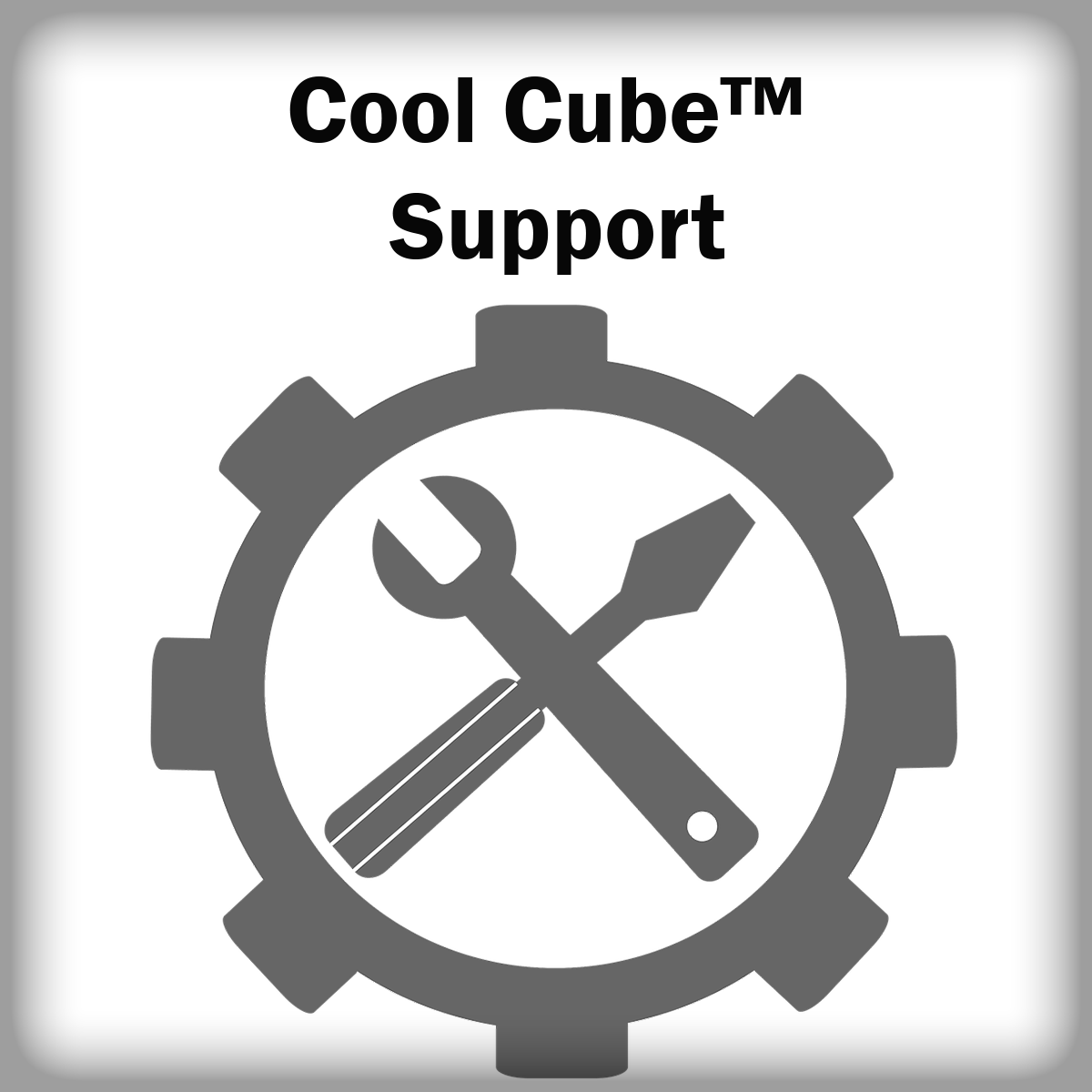

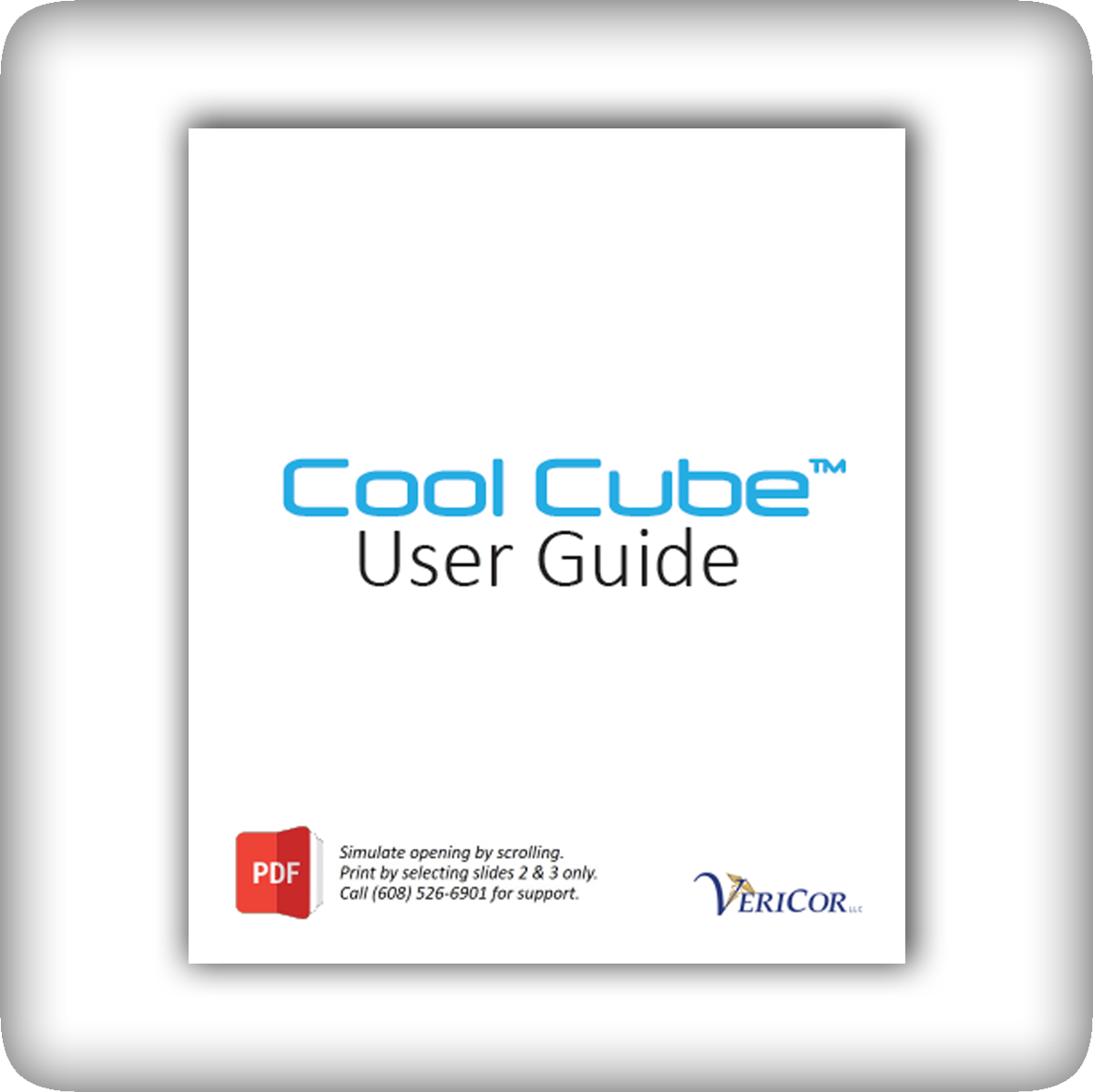
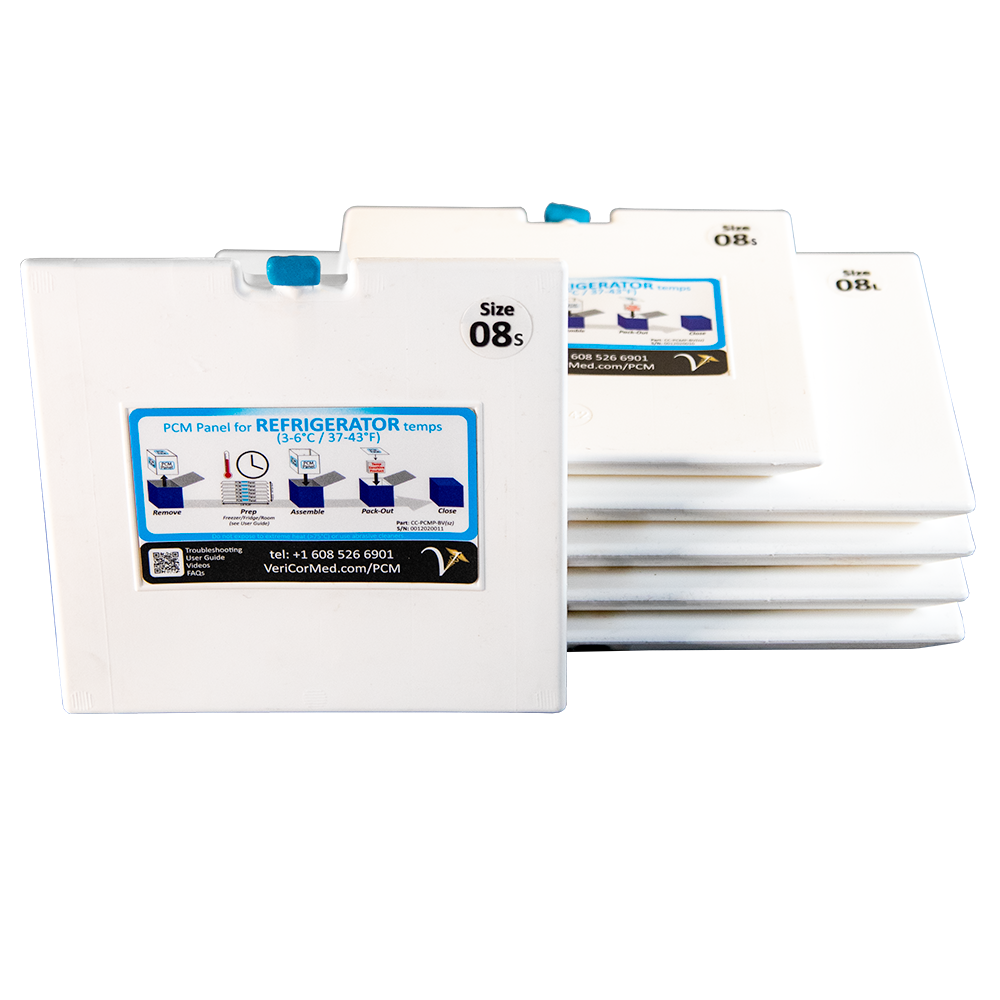
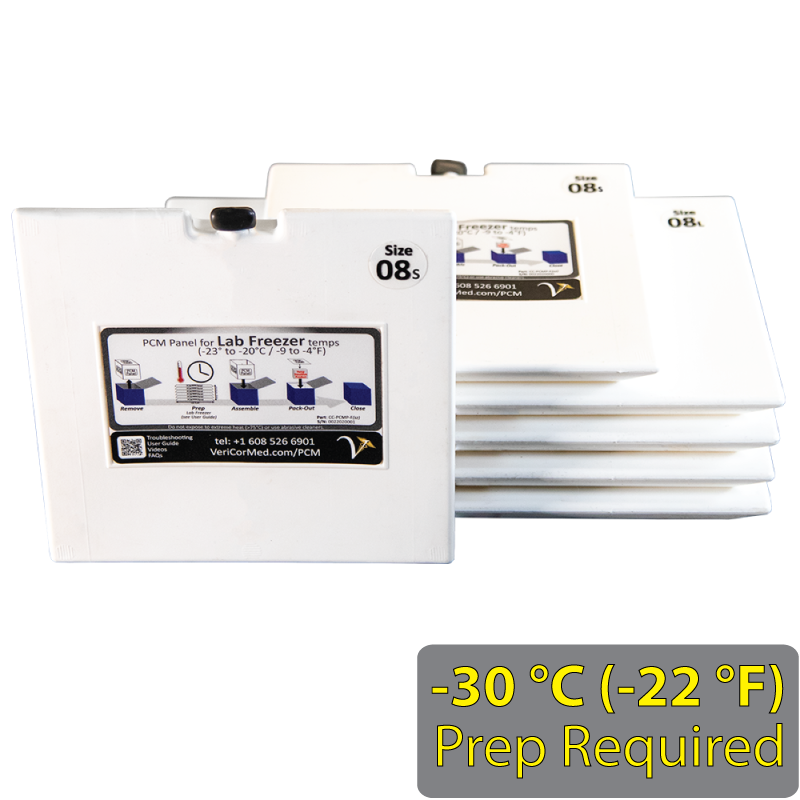
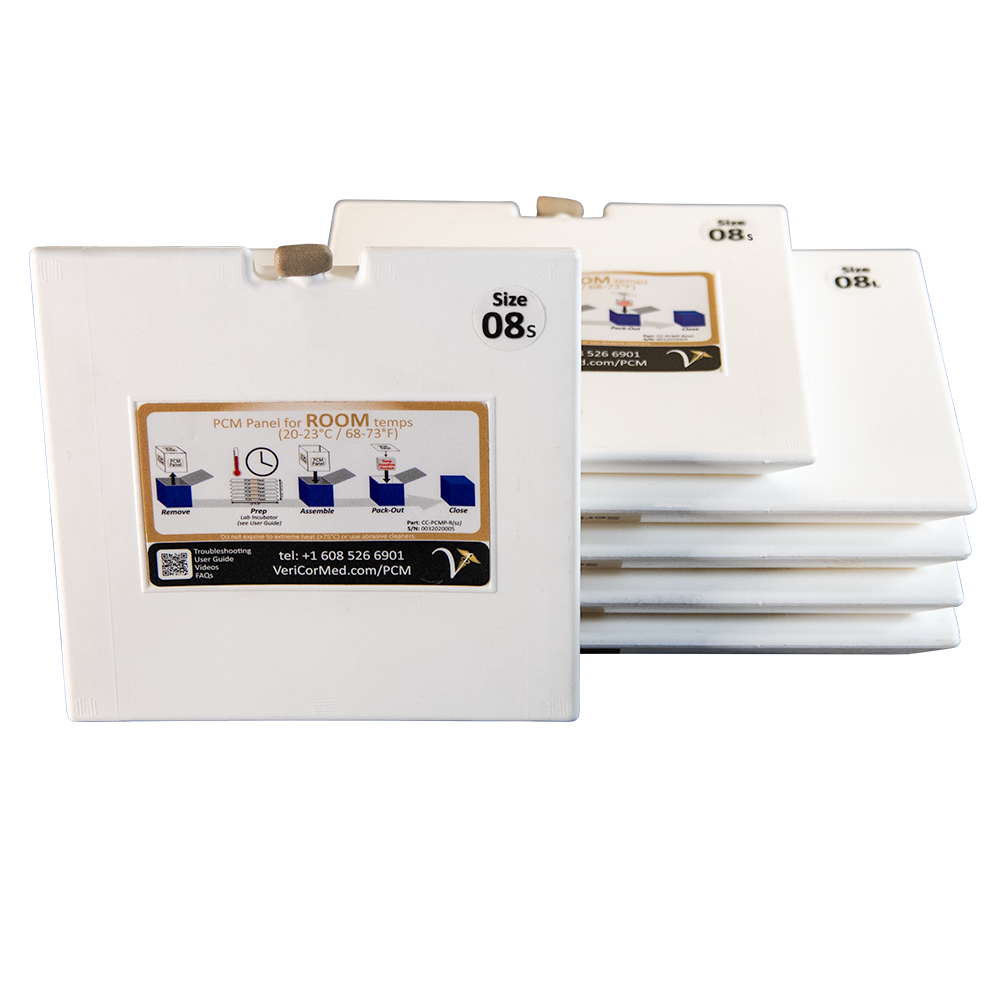
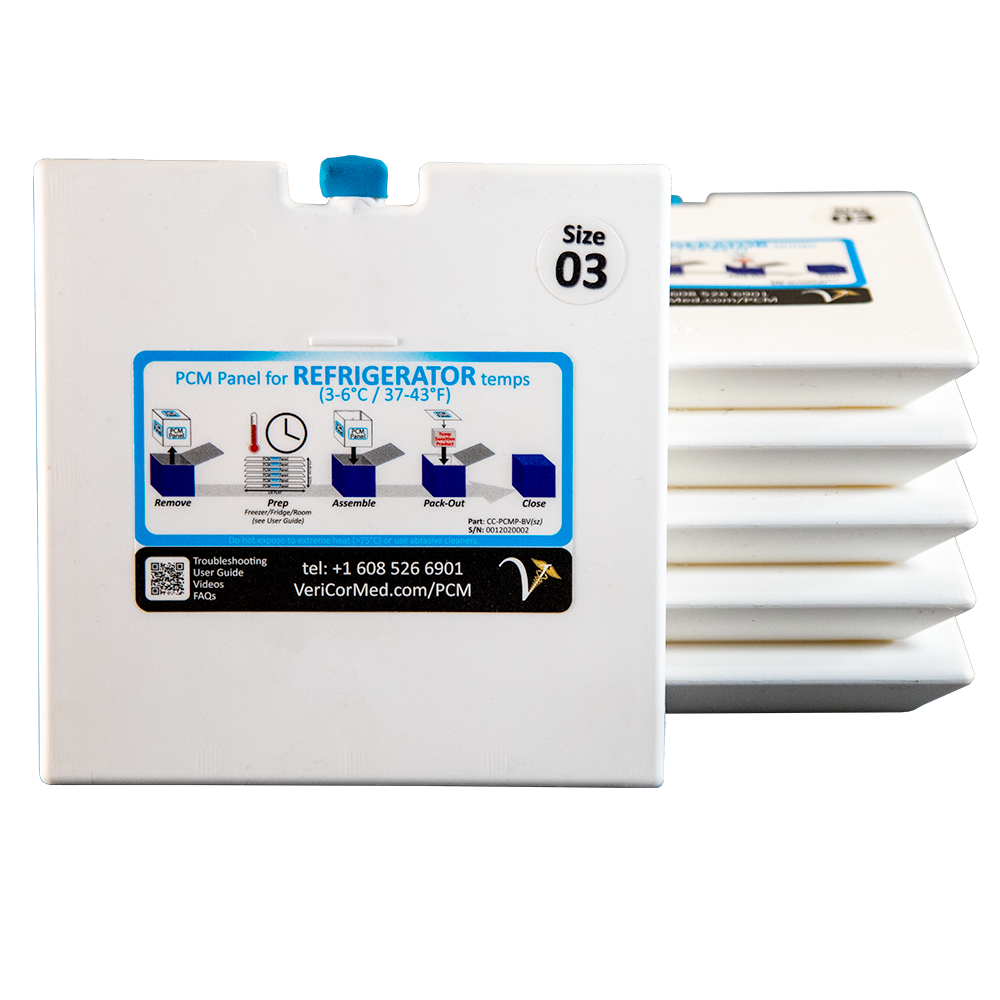
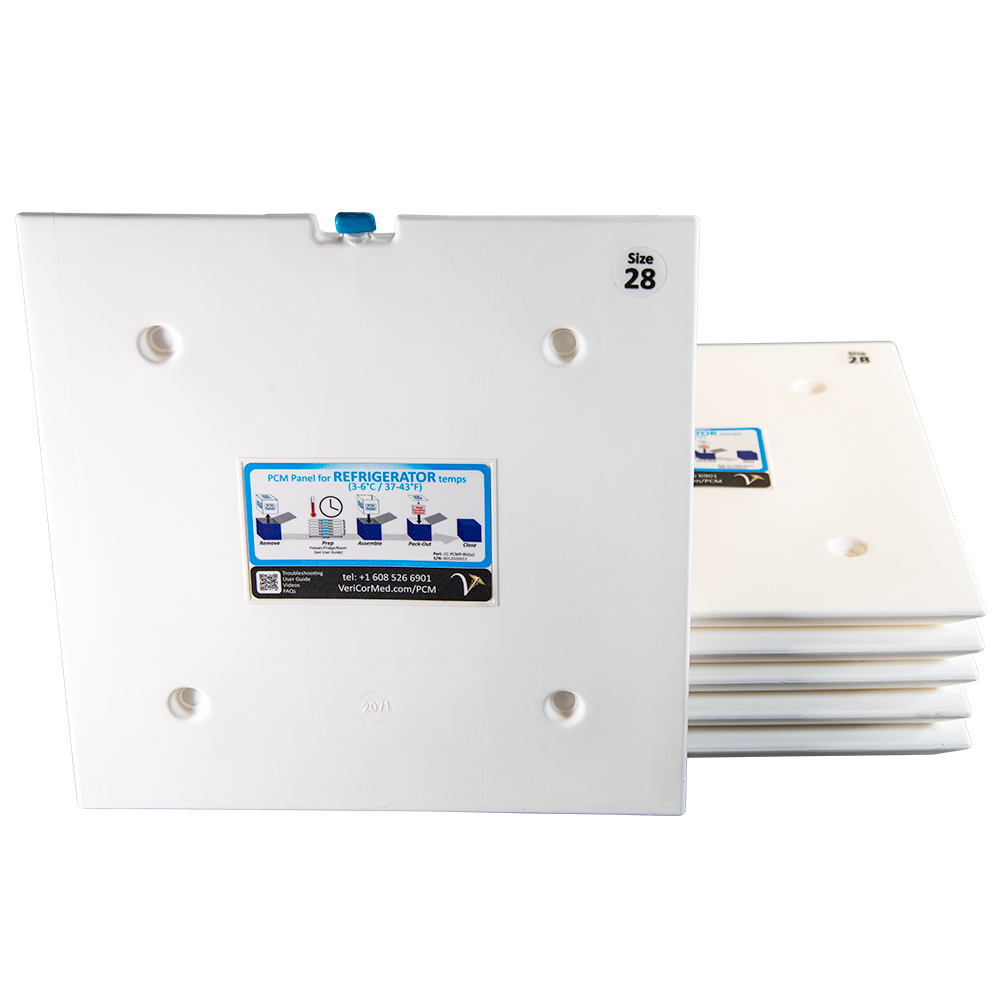
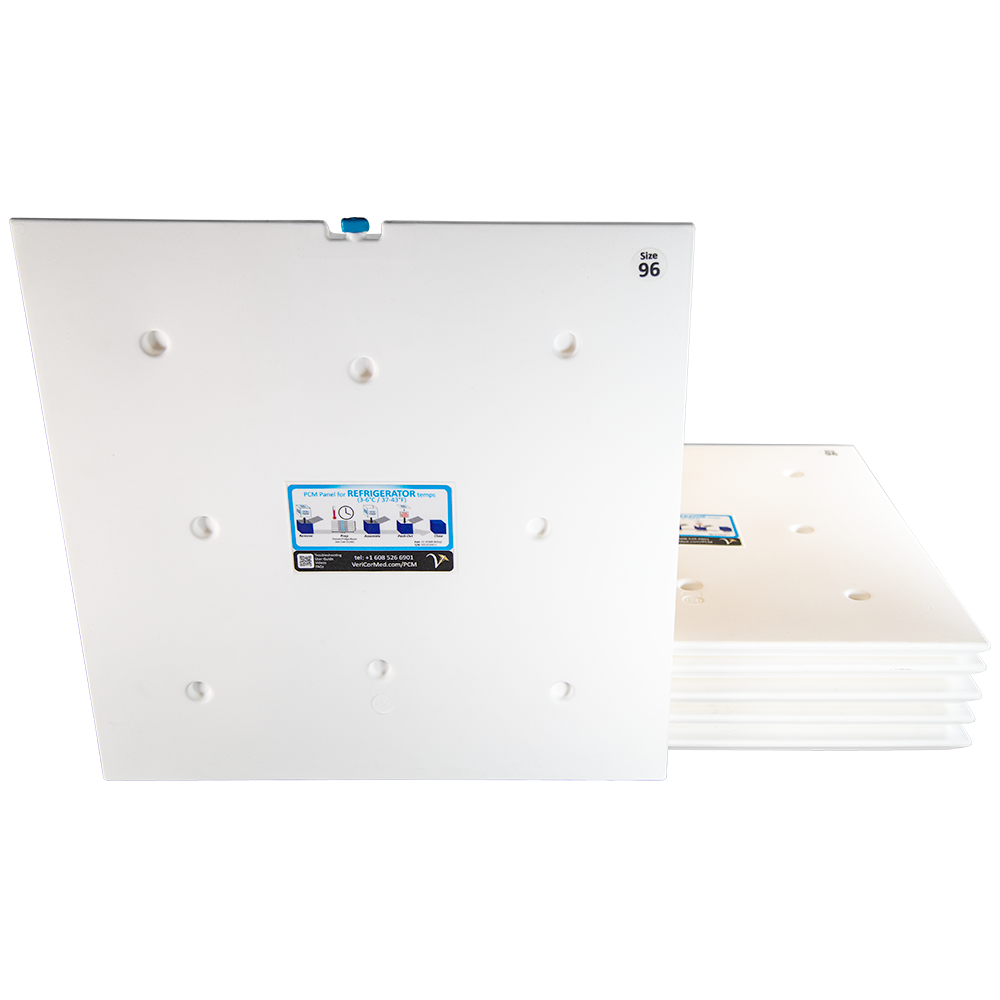
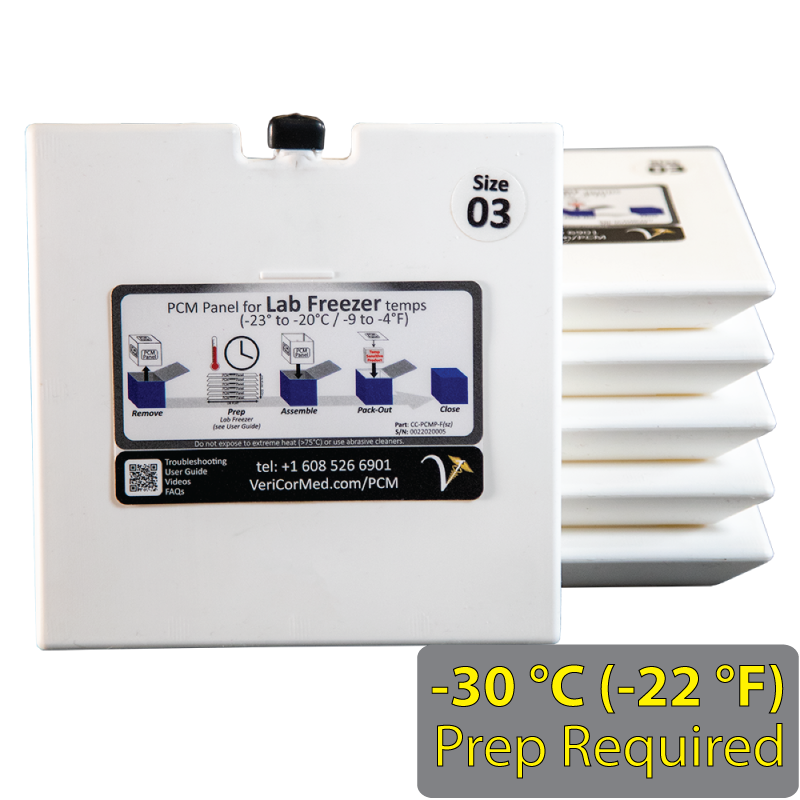
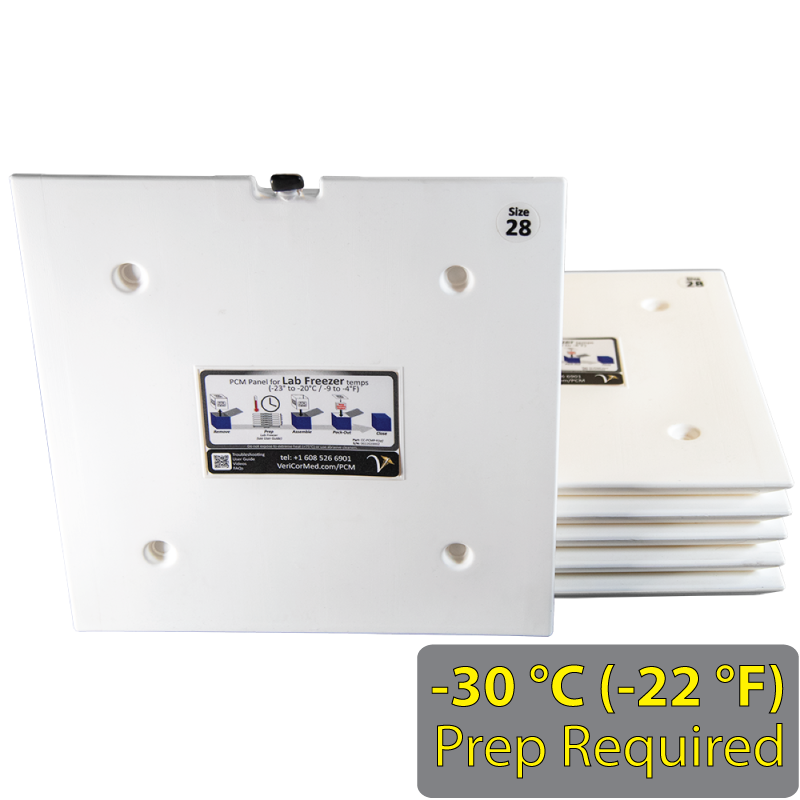
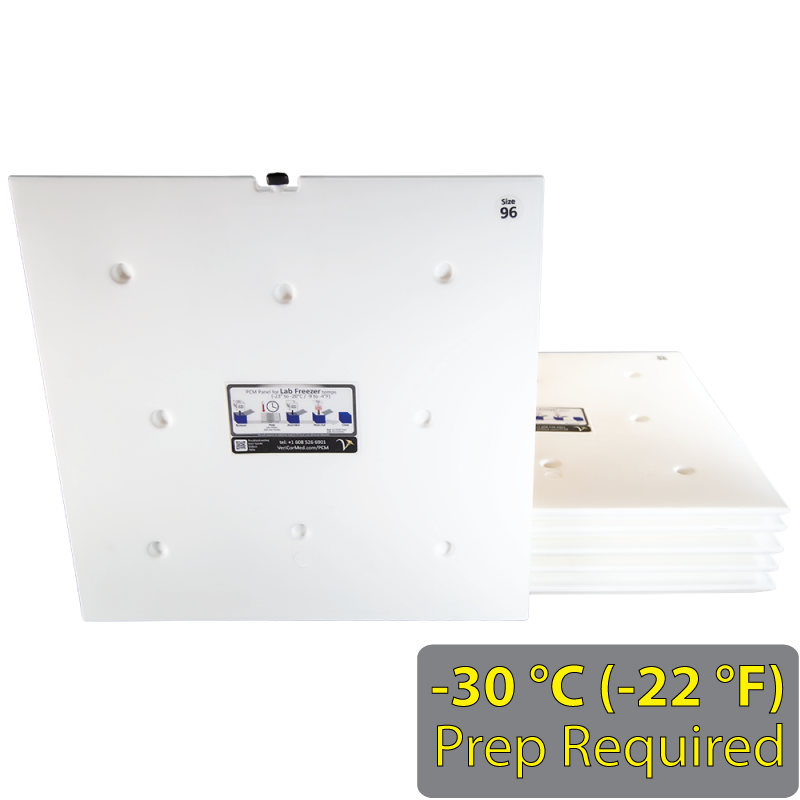
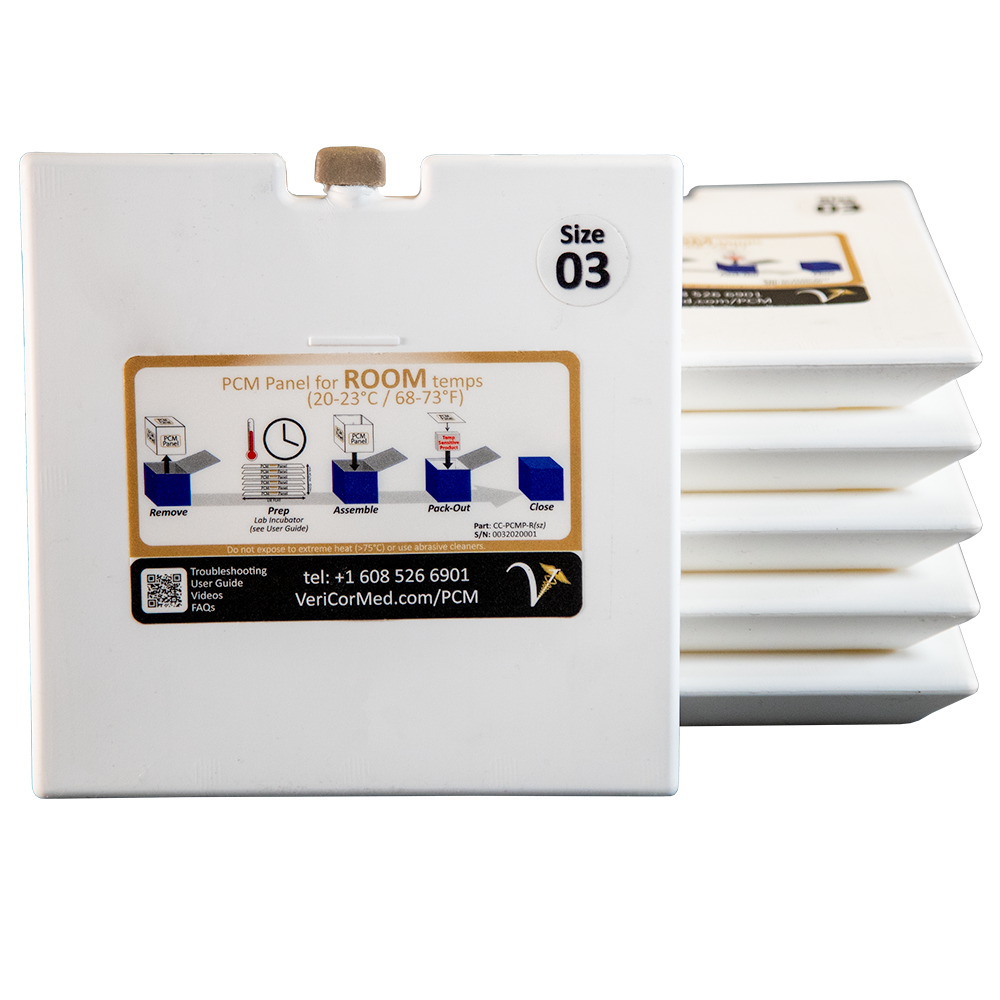
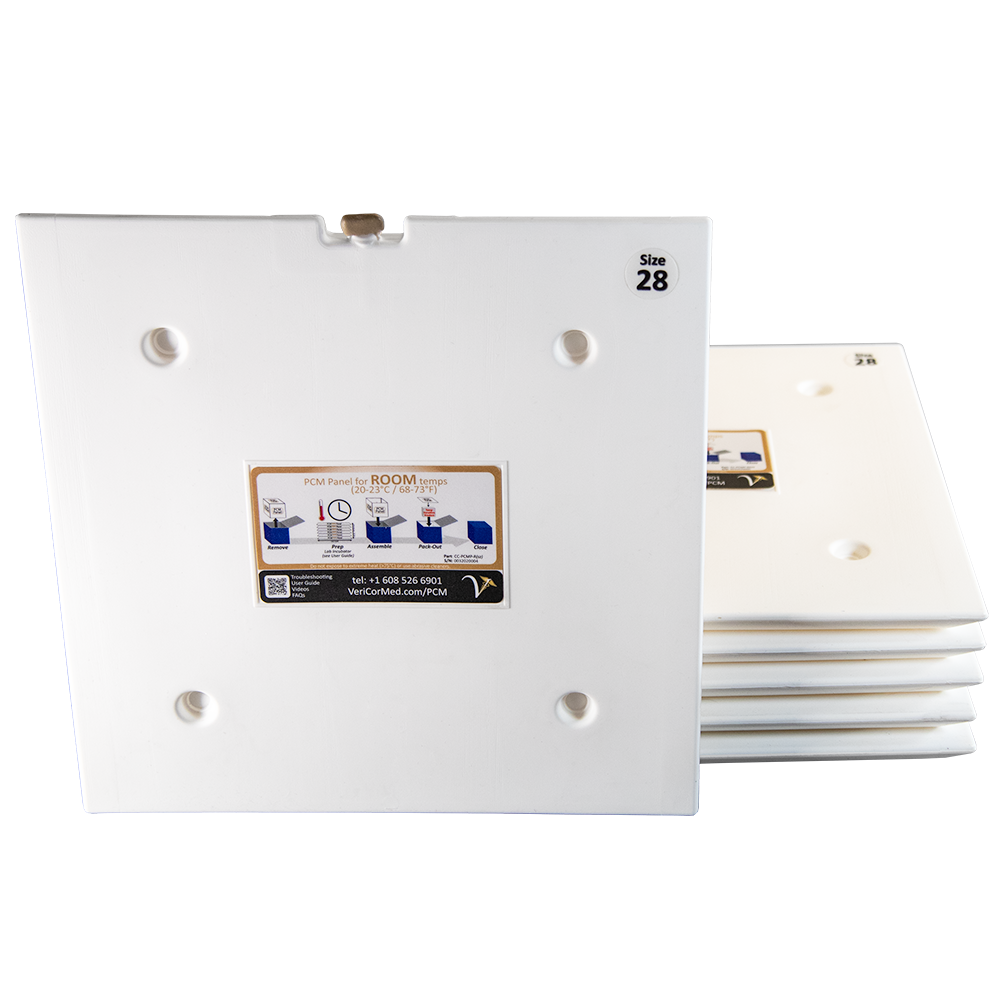
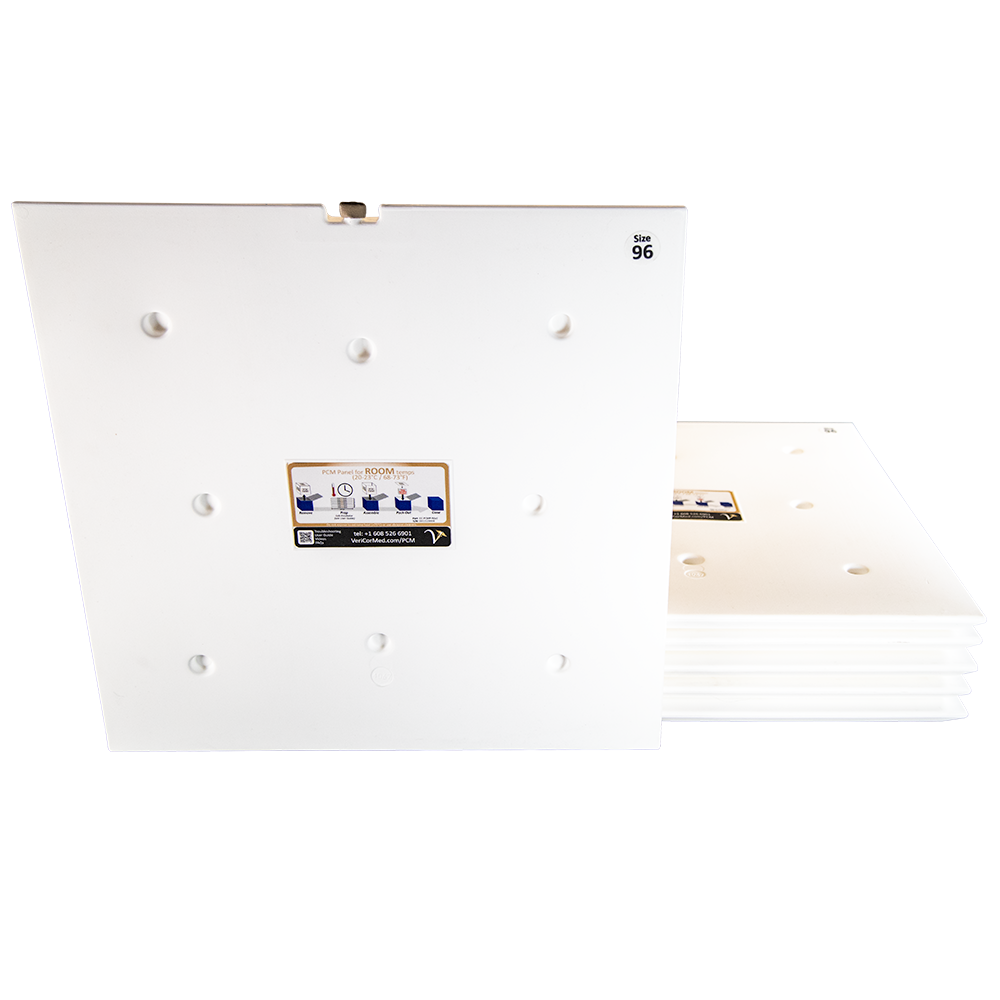



You must be logged in to post a comment.